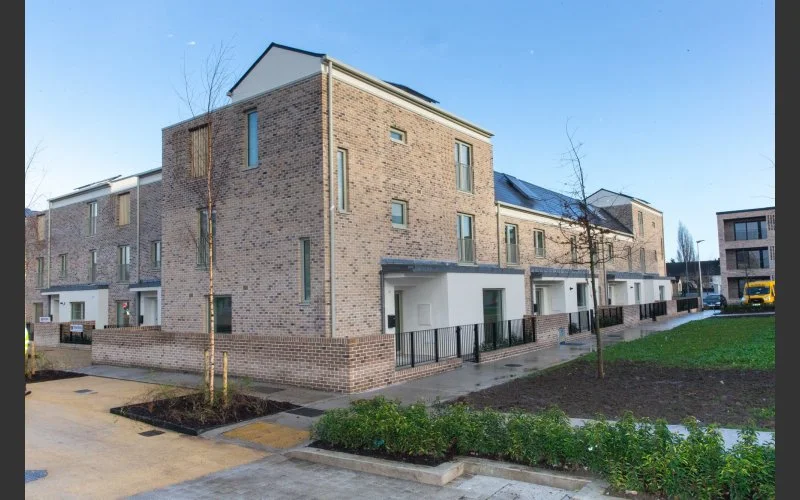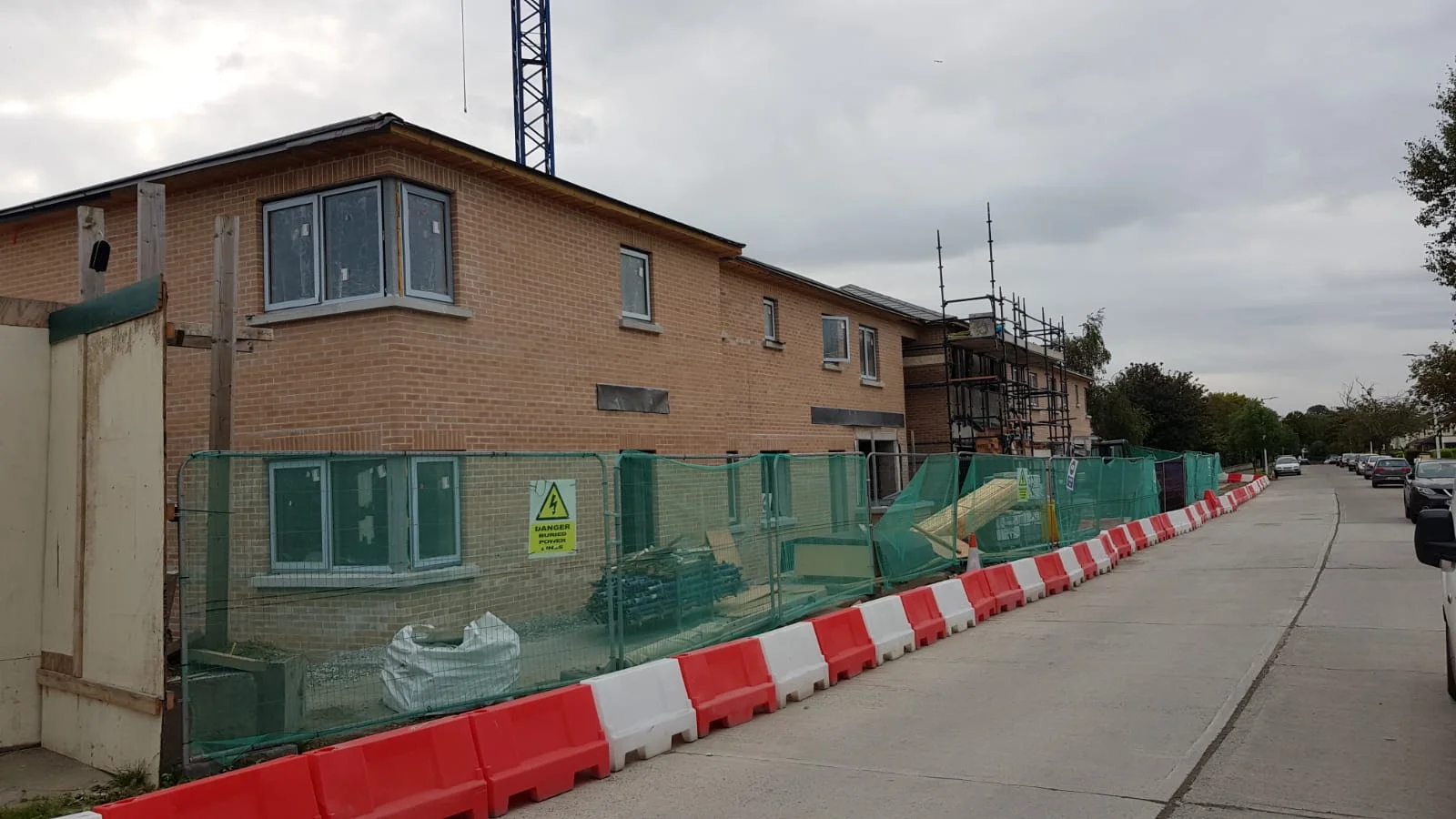Three recent housing schemes in Dundrum and Ballinteer in South Dublin serve as a case study of what a new system of UP Housing (Universal Public Housing) might look like and how easily it could be developed. All three schemes have been developed by Dun Laoghaire Rathdown County Council since 2016.
The first scheme, Rosemount Court in Dundrum, was built on a publicly-owned brown field site in the heart of the existing Rosemount estate. The site was previously occupied by three low-rise blocks of flats which were demolished a number of years ago. The new build consists of 44 homes ranging from one-bed apartments to four-bed houses.
Unlike many other ‘social housing’ developments, the design and finish of Rosemount Court is indistinguishable from similar private housing. And the housing appears to have been built to the highest modern standards in terms of insulation, heating systems and layout.
Rosemount Court, a mixture of modern one, two, three and four bedroom apartments and houses.
While Rosemount Court follows in the long tradition of building publicly-owned housing on public land, the second scheme in this case study followed a more novel development path.
Moyola Court is located off Lower Churchtown Road, about one kilometer from Rosemount Court. It’s a twelve house development that was privately built in the 1970s. And it was privately owned up until 2017 when it was acquired by Dun Laoghaire Rathdown County Council.
A major refurbishment of the houses followed before they were allocated as the ‘forever homes’ of twelve families taken from the social housing waiting list.
Moyola Court is one of a handful of existing housing developments that have been taken in their entirety from private ownership into public ownership in recent years. Individual houses have also been bought on the open market by local authorities in an attempt to built up their stock of public housing.
The total number of houses that have moved from private to public ownership, however, pales in comparison to the more than 220,000 public homes that have ended up in the private sector as a result of vote-chasing tenant-purchase schemes.
Moyola Court, a formerly private housing development that is now in public ownership and providing twelve families with secure, affordable homes.
The third and final development in this case study is a 21 home development on Broadford Rise in Ballinteer. The site in question was in private ownership before it was acquired by DLR some years ago.
The 21 dwellings and associated facilities are being purpose-built for senior citizens. It is expected that many of the new tenants will move to Broadford Rise from larger council houses, which DLR can then in turn use to home larger, younger families.
All of the tenants that will live in Rosemount Court, Moyola Court and Broadford Rise over the coming decades will pay affordable rents linked to their individual incomes. And they will all enjoy a security of tenure that will allow them to make long-term decisions about employment, education and other important areas of their family’s lives.
Affordability and security of tenure are two of the most important pillars of a just housing system - two pillars that the private sector does not provide and will always resist.
The three developments above show what a local authority can achieve with funding and a bit of lateral thinking. They provide a taster of what would be possible if the political will existed to create a new system of UP Housing that would provide secure, affordable homes to hundreds of thousands of people.
New homes on Broadford Rise will provide purpose-built housing for older residents - many of whom will surrender larger homes which can then be used to house younger, larger families.
The model of UP Housing that Éirigí For A New Republic is proposing would be open to everyone that is need of a home. This is fundamentally different to the current model of ‘social housing’ which is restricted to those on low and very low incomes.
UP Housing would provide hundreds of thousands of individuals and families with an alternative to renting or buying in the exploitative private sector. Just as ‘social housing’ tenants do now, everyone that was in need of a home would be able to rent a home from their local council with full security of tenure while paying an affordable rent linked to their income.
Developing a new system of UP Housing would require the state to embark on a massive ‘build and buy’ programme to dramatically increase the level of publicly-owned housing from the current low level of just 10% of the overall housing stock.
The mechanisms to increase the volume of public housing already exist - build public housing on public lands as in Rosemount, acquire existing housing from the private sector as in Moyola Court, acquire private land on which to build public housing, as in Broadford Rise and increase the percentage of Part V housing that is already ring-fenced for ‘social housing’ in every newly-built private development.
There’s no need for constitutional referendums on the right to housing or any other new legislation. Everything is already in place for UP Housing to become a reality. The only thing that is missing is the political will to make it a reality.
You can find out more about UP Housing here. And you can sign the UP Housing petition here
Over the coming weeks and months Éirígí will be ramping up the demand for UP Housing with leaflet distribution, information stalls, petitions, banner drops, public meetings and other activities. If you’re interested in helping out, please get in touch via the Contact Us form here.




